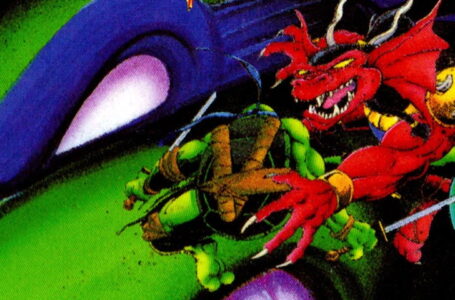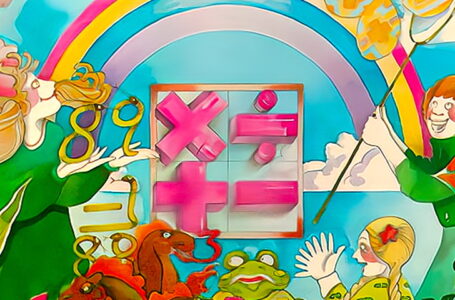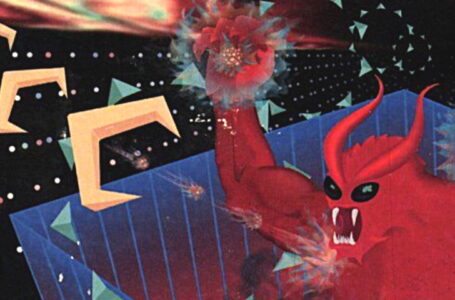Atari 50: The Anniversary Celebration is the new benchmark for retro compilations
There have been a lot of Atari retro compilations over the years. Pretty much from the moment home computers and consoles were powerful enough to emulate the humble Atari 2600 from the earliest days of gaming, there have been commercial compilations of classic Atari games. But there has never, ever been anything quite like Atari 50: The Anniversary Celebration from Digital Eclipse.
Those with a finger on the retro pulse will, of course, know Digital Eclipse as some of the absolute masters of retro game compilations. Besides Atari 50, they’ve also brought us the excellent SNK 40th Anniversary Collection, Teenage Mutant Ninja Turtles: The Cowabunga Collection, the Street Fighter 30th Anniversary Collection, the Mega Man Legacy Collection and plenty more besides. And each one of those has been magnificent in its own way, showing a wonderful amount of loving respect to the games preserved in those compilations.
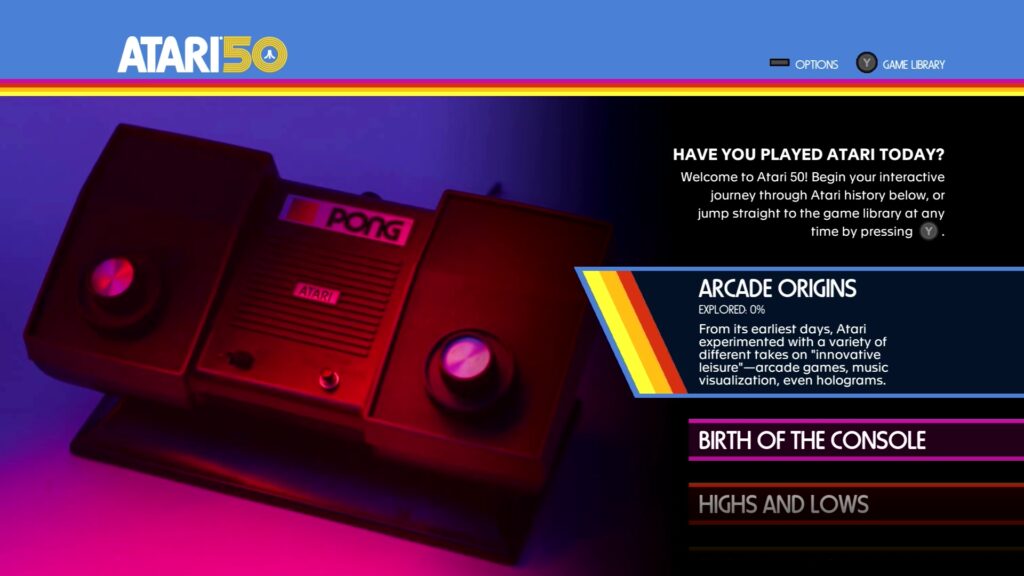
But Atari 50 is different. Atari 50 is a step further. In fact, I’d go so far as to say that Digital Eclipse has pretty much created a new genre of interactive entertainment here, because to call this a “retro game compilation” feels like doing it a great injustice. What we have here is an interactive documentary and museum, in which a huge number of the “exhibits” are fully hands-on, interactive affairs — and where the people who were responsible for those exhibits are always on hand to offer their thoughts and memories.
Key to the Atari 50 experience is its default “timeline” view, which is split into several distinct eras. These include the company’s earliest days in the arcades, the golden era of the 2600, subsequent failed attempts to capture the same lightning in a bottle that the 2600 did, the parallel development of the 8-bit home computer era, and finally onward into Atari’s most troubled and experimental period with the Lynx and Jaguar systems.
Within each section, you’re presented with a timeline that you can scroll through horizontally, with each node representing a major happening or game release. Where there are additional supporting materials for that event — such as documents, 3D models, photographs, arcade flyers and video footage — you can scroll down from that initial node to explore further.
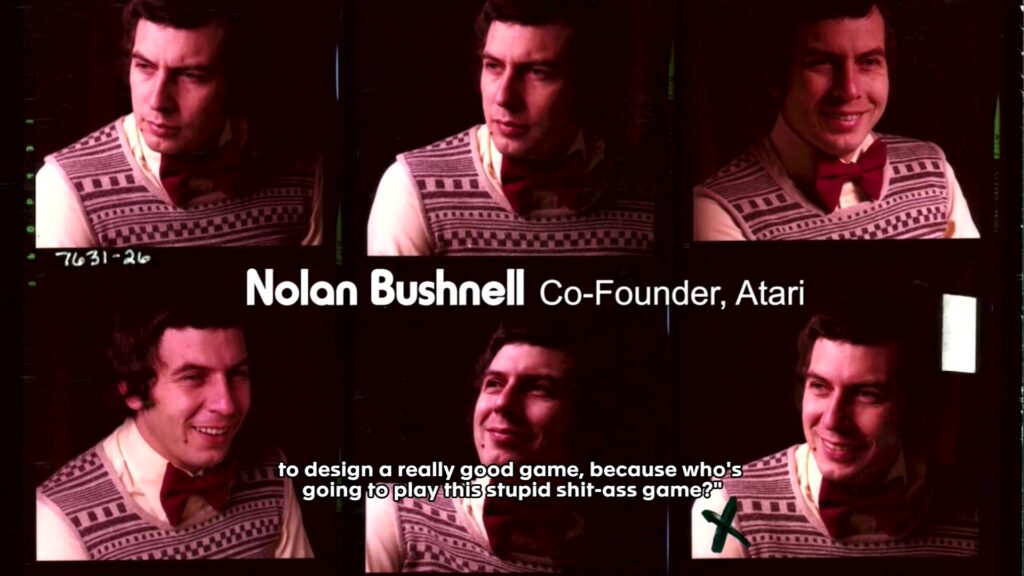
For example, in the node describing Pong, Atari’s first video game to enjoy breakout success, you can not only play Pong for yourself but also see interview footage from creator Alan Alcorn, look at the original arcade flyers and learn about the special cabinet variants created for use in waiting rooms and doctor’s surgeries known as “Puppy Pong” and “Dr. Pong”.
A lot of video footage has been specially shot for Atari 50, but there is also some archive footage available, too, including a segment from a 1970s TV programme where Atari founder Nolan Bushnell explains the creation of Computer Space and Pong, and his hopes for the then-fledgling video game market.
The specially shot footage is the highlight here, since it features a lot of former Atari members from back in the day, who are more than happy to share some of their favourite stories. There’s even a whole section addressing drug culture at Atari in the ’70s and ’80s, with different big names from the period having markedly different experiences!

It’s a bit of a shame that some of the interview footage appears to have been recorded over online video call rather than “live” — Defender, Robotron and Cruis’n creator Eugene Jarvis’ contributions stand out particularly strongly in this regard due to his use of a horrible “blur my background” automatic filter — but ultimately it’s the things that are being said which are important rather than how the talking head footage looks. And the things which are being said are consistently interesting.
It’s a little odd to see some “modern” faces pop up in the interview footage from time to time, though. Current Atari CEO Wade Rosen appears a little out of his depth when asked to comment on Pong, for example — probably because it released 14 years before he was born — and the presence of figures like Tim Schafer (of Double Fine) and Cliff Bleszinski (formerly of Epic) feels mostly inexplicable aside from “these are people who have made games recently who also have thoughts and memories from back in the day”.
The non-video content is fascinating, also. Everything is scanned at extremely high quality and can be zoomed and panned, allowing you to read everything clearly. And besides more “public” documents such as arcade flyers and magazine articles, Atari 50 also includes internal documents such as memos — complete with hand-scrawled responses in the margins — and design briefs. It’s all thoroughly interesting to trawl through.
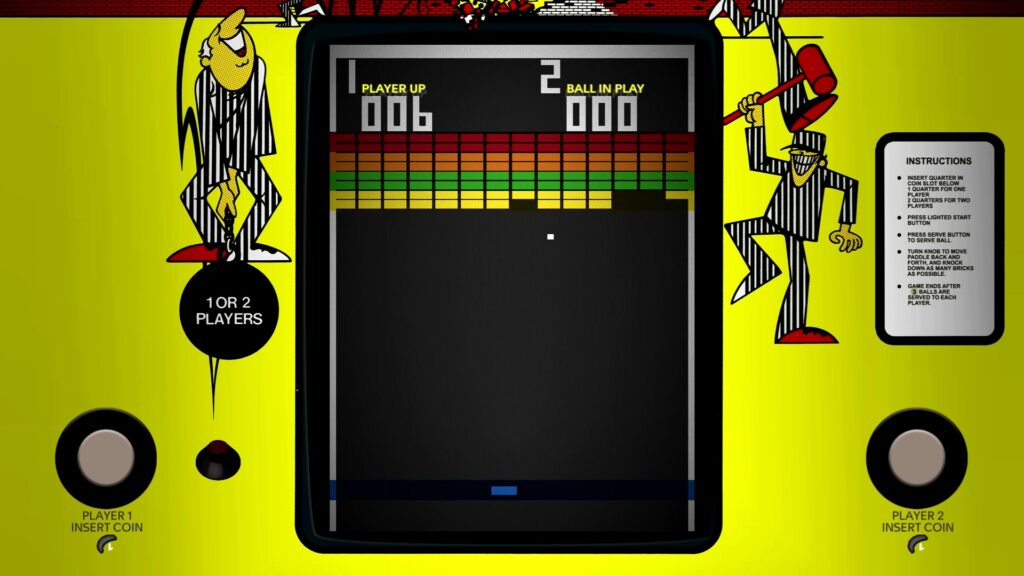
The games are, of course, the star of the show, though, so any time one of them comes up on the timeline it’s the first and main node you’ll see — with the exception of Digital Eclipse’s original 2022 modernisations of classic Atari titles, which appear as supplementary material for the original game in question.
Emulation is absolutely exemplary, as you would expect from Digital Eclipse, and noticeably superior to AtGames’ Atari Flashback Classics package from a few years back, particularly in the sound department. Arcade titles feature high-resolution bezels inspired by the original cabinets — including the instruction and scoring stickers — and the default visual settings are designed to replicate the experience of old hardware, including a subtle and unobtrusive CRT shader on raster titles and an authentic slight flicker on vector games.
Bezels and visual effects can be switched off if you so desire, but they’re so gracefully and subtly handled here that they feel like they’re “supposed” to be there rather than being obtrusive. The scanlines on the CRT filter in particular look much more authentic than many other attempts I’ve seen, and the vector titles have never looked better. Subtle touches like the quasi-3D cabinet for Asteroids Deluxe, highlighting how the physical painted backdrop actually had depth to it, also add a wonderful sense of immersion.
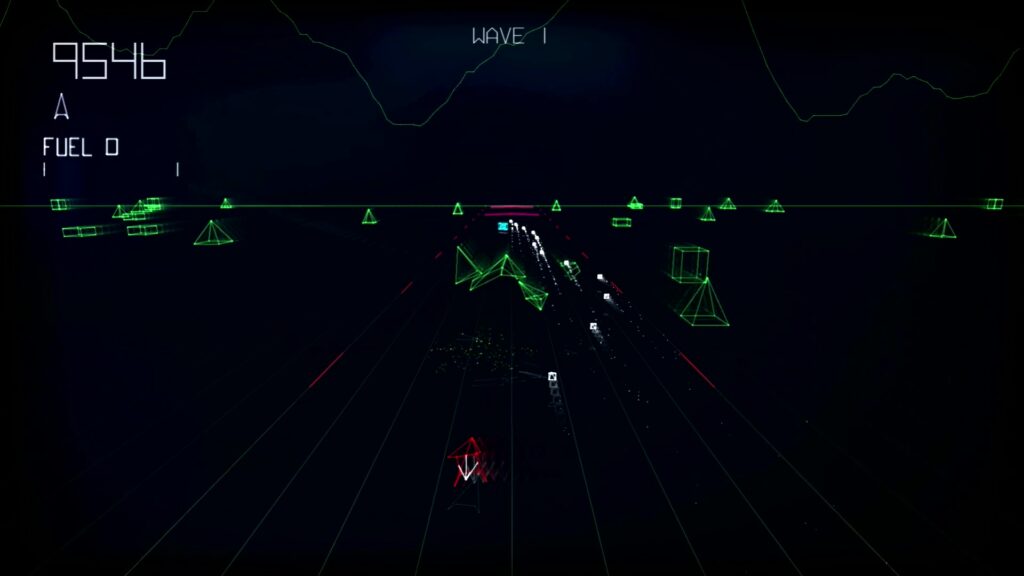
Digital Eclipse’s original games are fantastic, too. At the time of writing, I’m yet to try all of them, but so far they’ve all taken a distinctive approach to modernising the titles they’re riffing on, feeling markedly distinct to one another, respectful to their source material and accessible to a modern audience.
Four-player deathmatch Quadratank, for example, features multiple control schemes according to whether you want to play it like the original Tank arcade game, like Combat on the Atari 2600, or using a curious dual-stick setup where the left stick steers and the right stick controls moving forwards and backwards. Neo Breakout, meanwhile, features both classic-style wall-busting and competitive “Battle Breakout” modes, and VCTR-SCTR feels like the follow-up to Major Havoc that Owen Rubin never made.
My one criticism of Atari 50 is that a few parts of Atari history are a little thin on the ground — most notably the period during which the 16-bit Atari ST home computer was on the market. While the ST lost out in the gaming stakes quite heavily to its big rival, the Commodore Amiga, it was still a popular home computer for entertainment, productivity and, perhaps most significantly, music production.
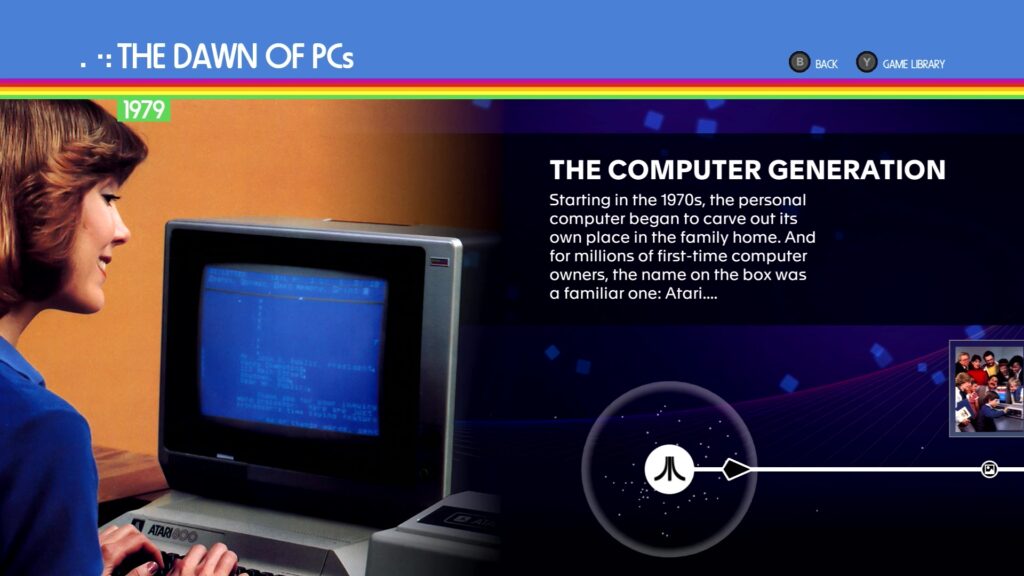
The ST does at least get mentioned in the timelines — but the complete lack of interactive ST content is a bit of a shame. I suspect licensing is to blame here, because the 16-bit home computer era coincided with a huge explosion in third-party development; Atari themselves didn’t actually put out many of their own games for the platform, so any ST titles included would have had to be licensed from their original and/or current rights holders.
The same will almost certainly be true for the “Atari Games” era of arcade titles, which came after the original Atari sold off its arcade division to the company that would become Midway; despite sharing a name, Atari Games was actually a completely separate company to the one who is the main subject of Atari 50.
While it would have been amazing to see Atari Games titles like Roadblasters, Escape from the Planet of the Robot Monsters and Hard Drivin’ included and acknowledged in their own special section of Atari 50, that would, at this point, effectively have meant Digital Eclipse working with a whole other company. Specifically, it would have meant them working with current Midway rights holders Warner Bros., who, I have it on good authority, are a bit of a pain in the arse to work with.
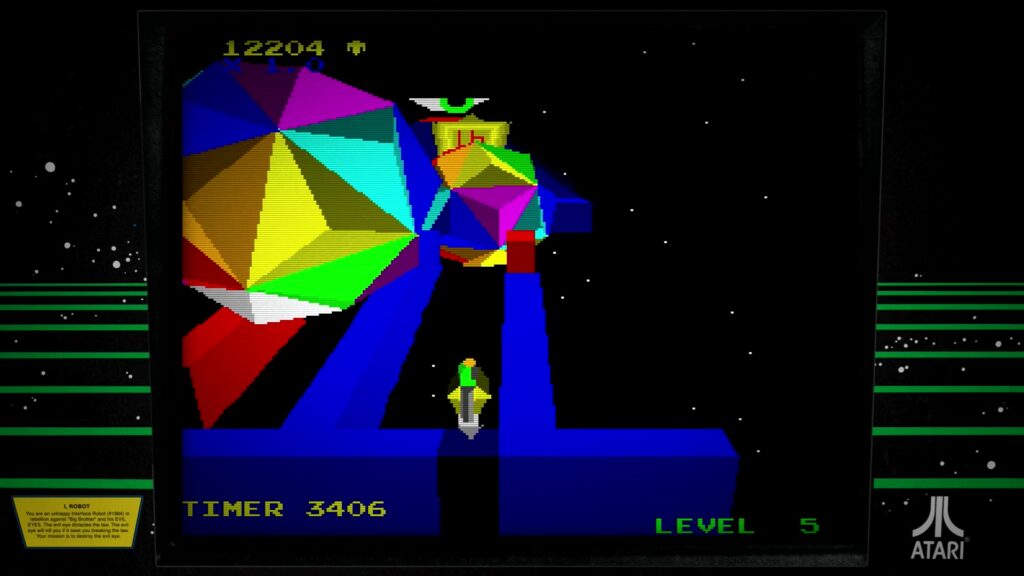
Even without the ST and Atari Games titles, though, there’s still a huge amount of games in Atari 50, including arcade games that haven’t come home in an official capacity before, and titles for platforms such as Atari 5200, Atari 7800, Atari Lynx and Atari Jaguar that haven’t had any rereleases since they were current. So as disappointed I am as someone who grew up with the ST, I can probably forgive its omission from the playable component of Atari 50.
All in all, Atari 50 is a spectacular example of video game history presented in interactive form. You can enjoy it simply as a game compilation if you want — the full game library is accessible with the touch of a button, though there are a few mystery titles to unlock via various means! — but really the appeal here is the amazing amount of additional material to explore.
Digital Eclipse has absolutely set a new benchmark for what to expect from a release like this. It’d be amazing to see such a lovingly crafted interactive documentary-cum-museum for other longstanding video game companies from all over the world — but realistically speaking, Atari is one of the only companies in the world today for which such a release will ever be possible, for a variety of reasons.
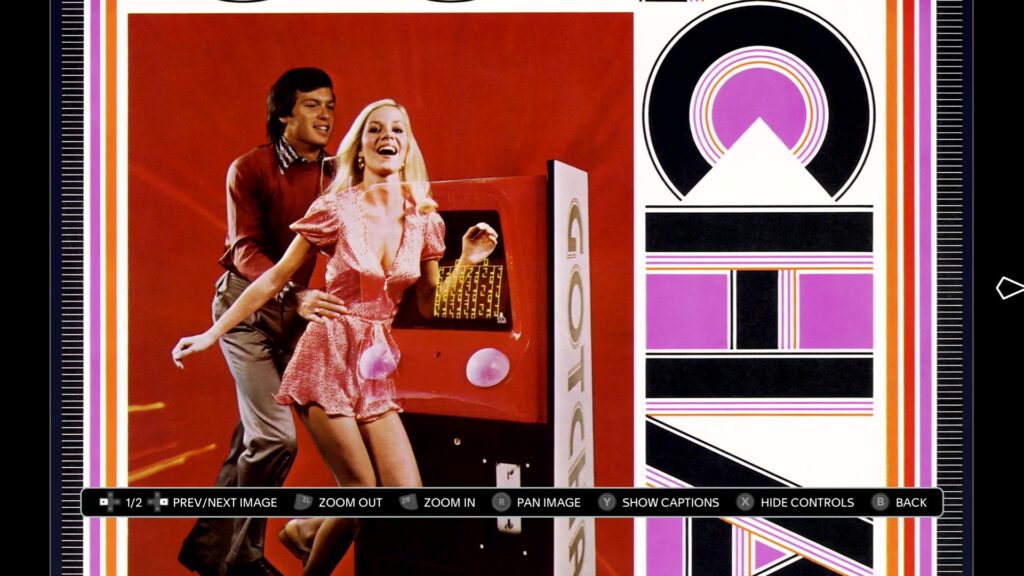
Can you imagine a company like Nintendo being so open and honest as we see the participants in this project being? I somehow doubt it, as fascinating as a Nintendo equivalent of Atari 50 would surely be. So for now we’ll have to enjoy Atari 50 as a standout, exemplary title that shows everyone else how interactive video game history and preservation should be done. Perhaps one day some other big players in the space will be open to letting us into their archives in the same way.
Atari 50: The Anniversary Celebration is available now for PC via Steam, Nintendo Switch, PlayStation 4 and Xbox.
Join The Discussion
Rice Digital Discord
Rice Digital Twitter
Rice Digital Facebook
Or write us a letter for the Rice Digital Friday Letters Page by clicking here!
Disclosure: Some links in this article may be affiliate links, which means we may earn a small commission if you make a purchase after clicking on them. This is at no additional cost to you and helps support Rice Digital!
- Letter from the Editor: passing the torch - June 30, 2023
- Super Woden GP 2 is looking promising - June 30, 2023
- Inti Creates is making a 32 bit-style Love Live action platformer - June 26, 2023




